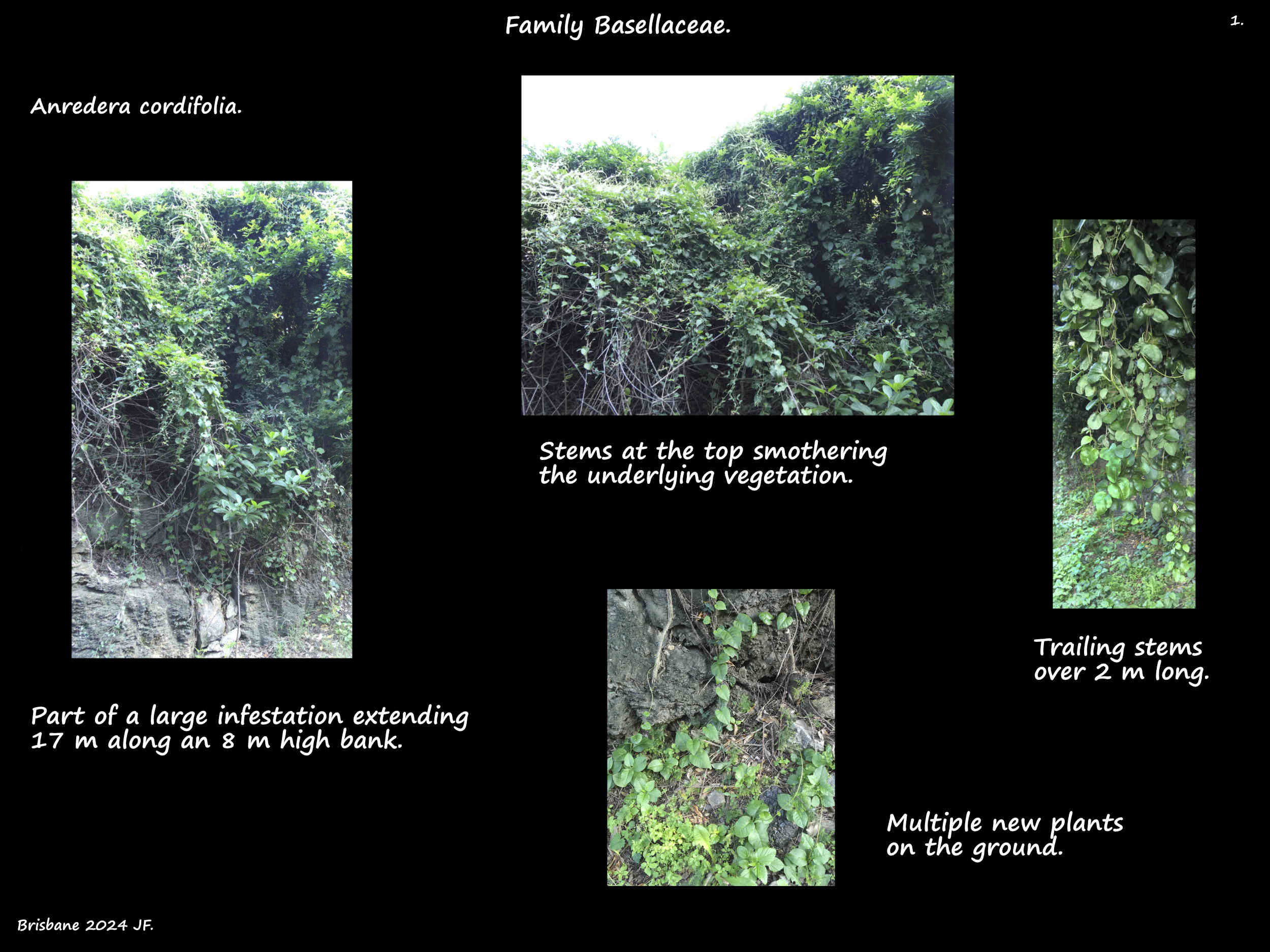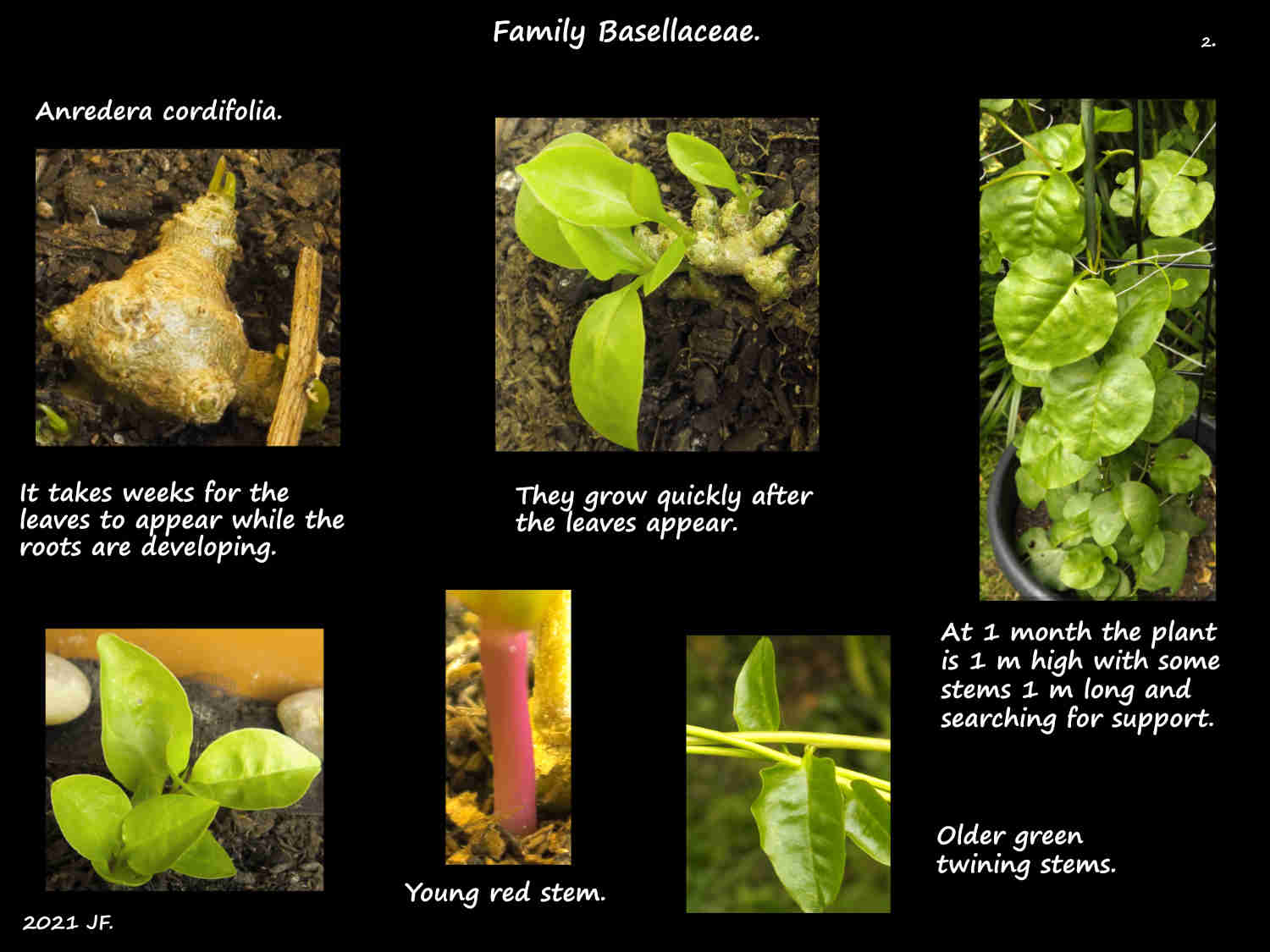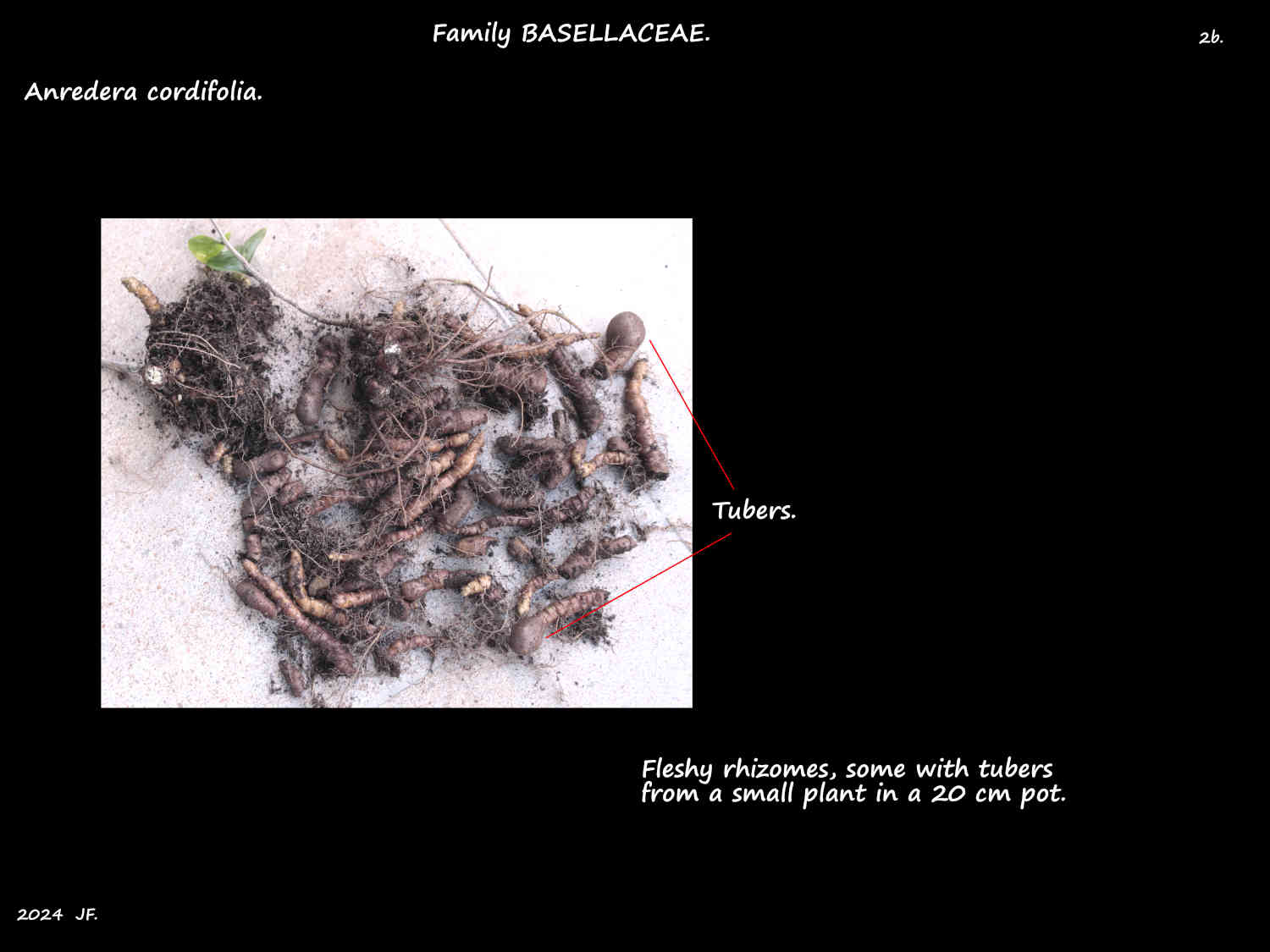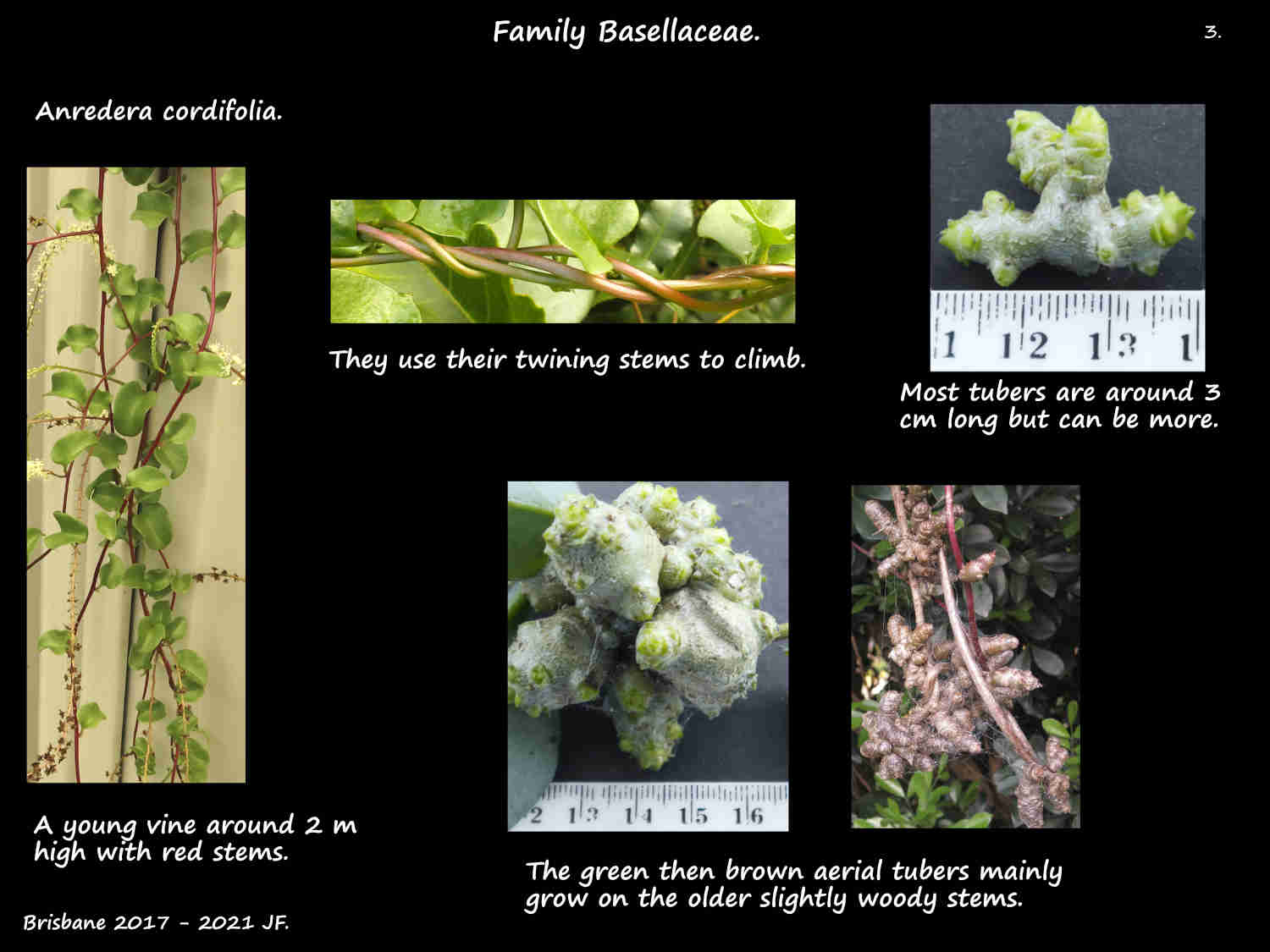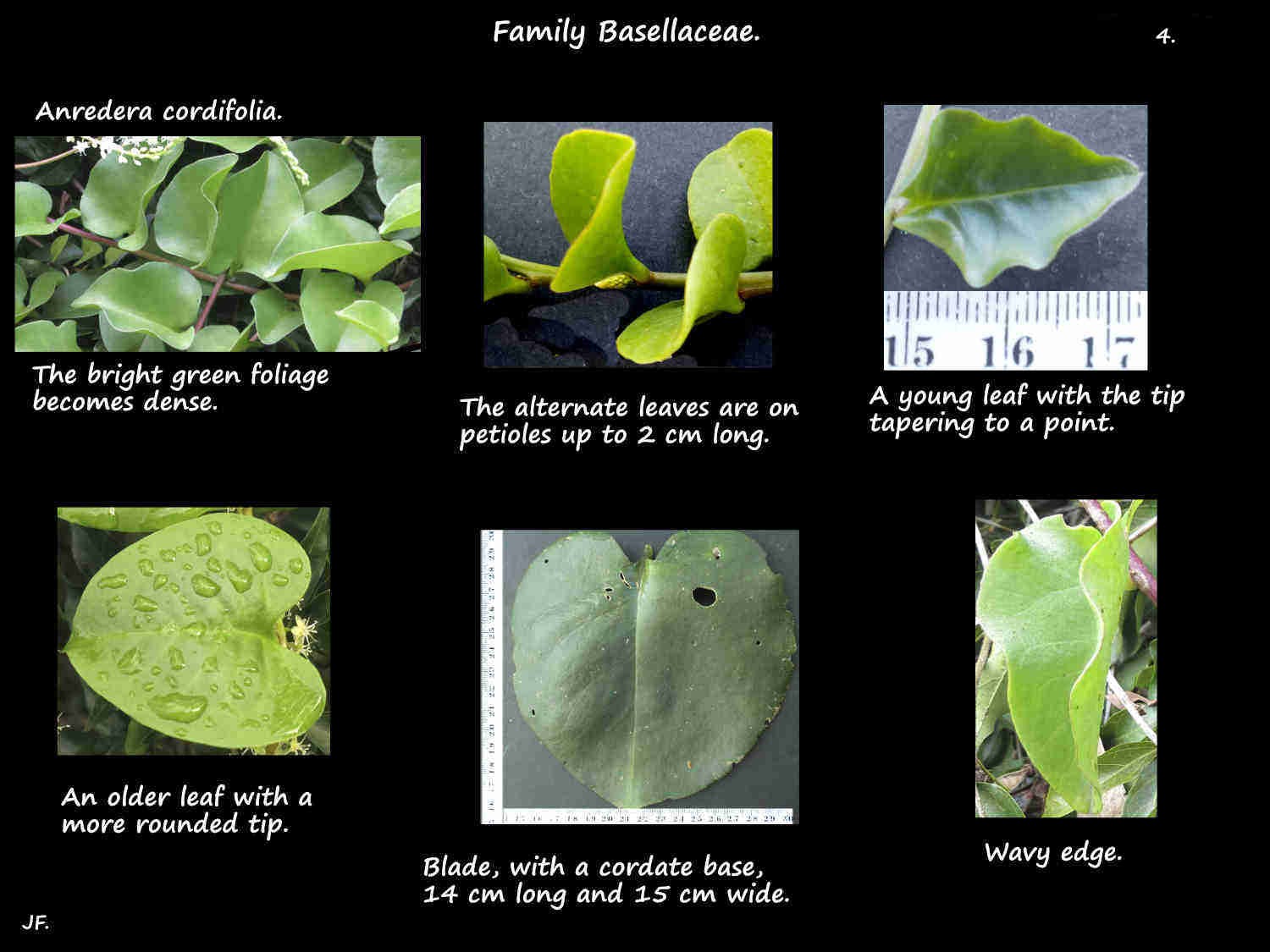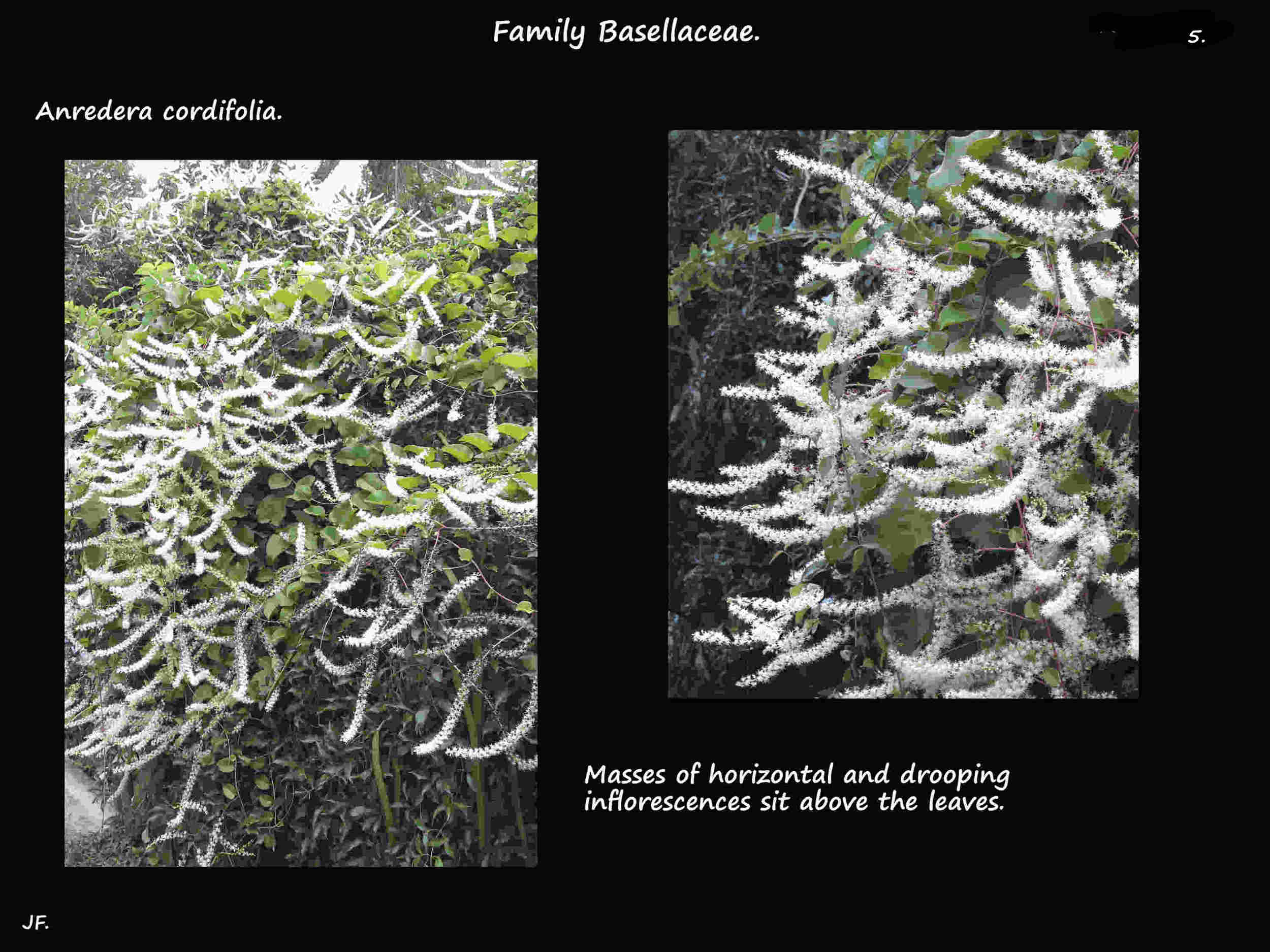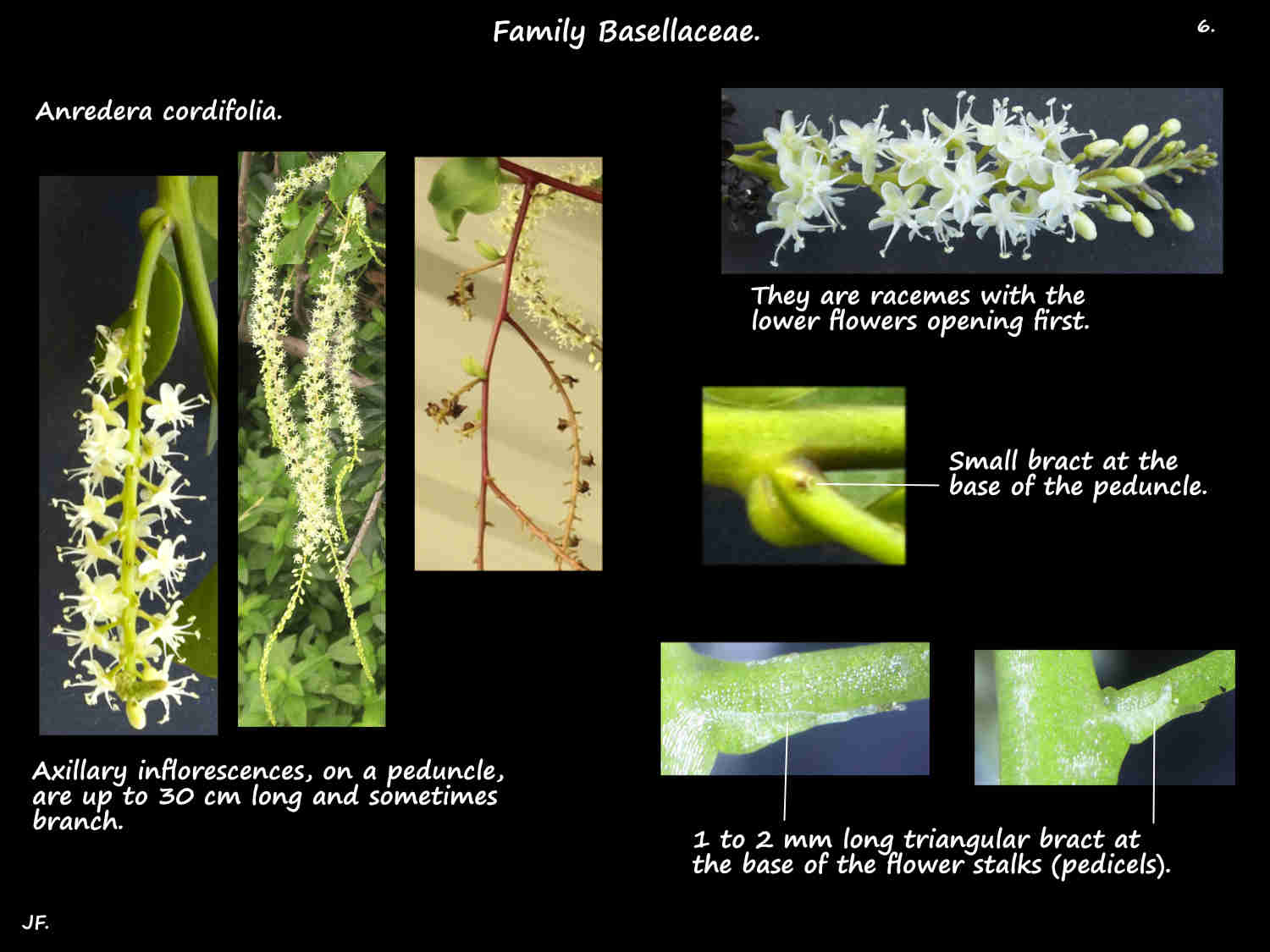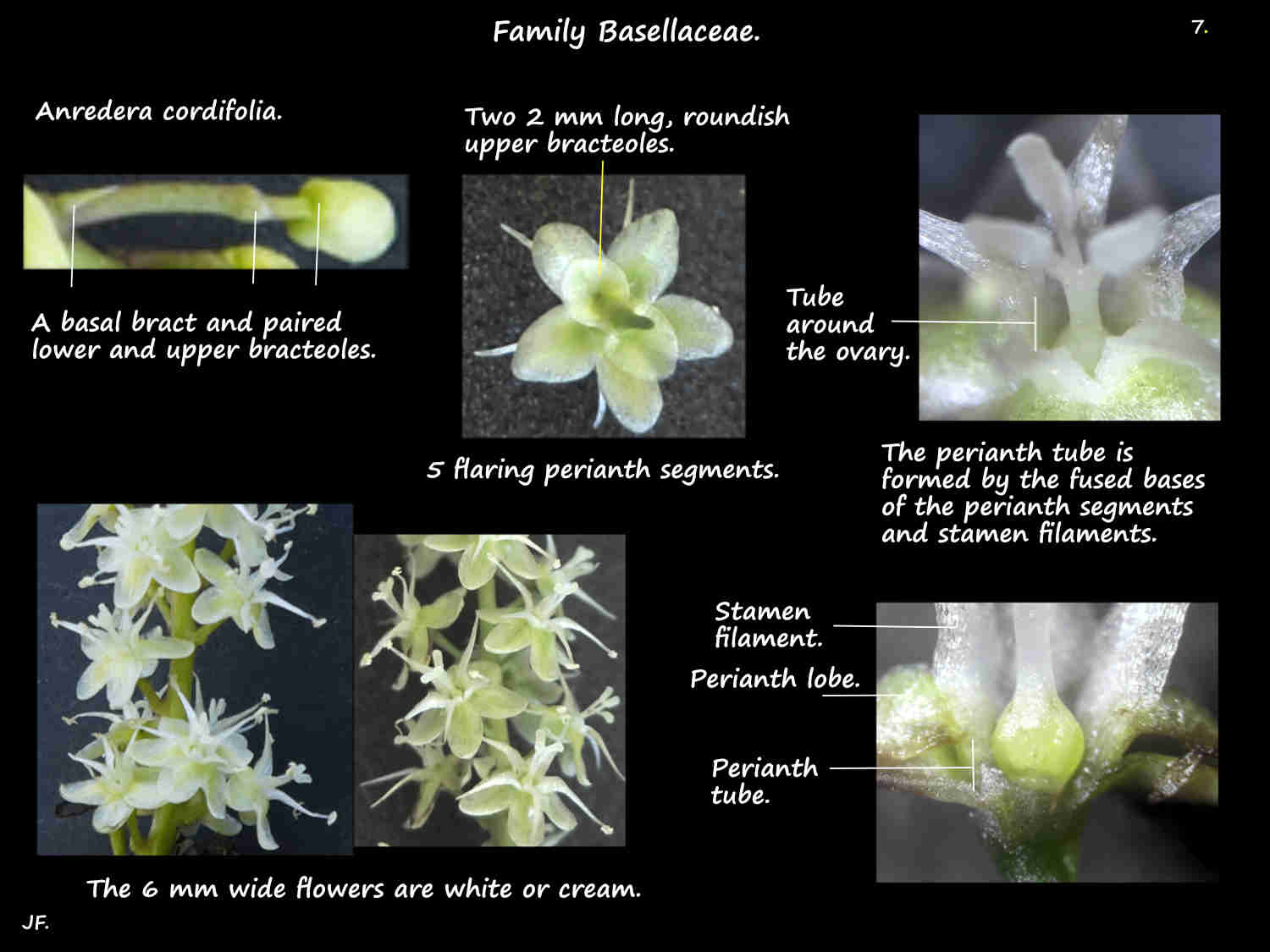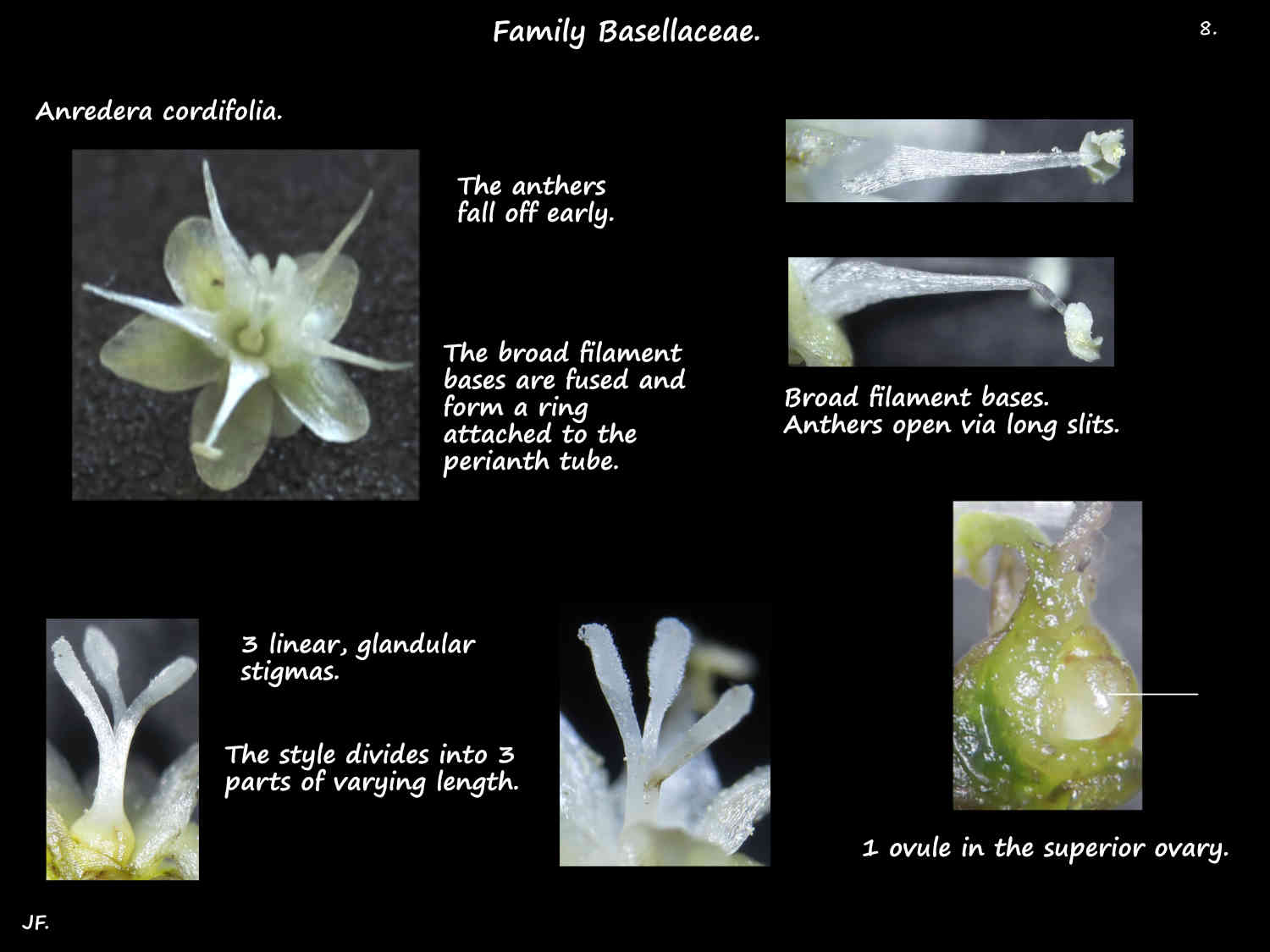Anredera cordifolia.
Madeira vine, in Family Basellaceae, is native to tropical America.
One of the 5 to 10 species it is naturalised in Australia where it was used as a garden plant.
Now, one of the most invasive weeds, it is widespread in S. E. Queensland.
A very rapid grower it forms dense clumps and can smother other vegetation or break branches
due to the weight of the fleshy stems and leaves and the masses of aerial tubers.
The vines grow from fleshy underground stems or rhizomes that have tubers.
They are twining climbers with young red or green stems usually about 2 to 3 m long.
Older, greyish and sometimes woody stems can be up to 20 m long.
Aerial tubers commonly grow from the axils on older stems.
Up to 3 cm across they are green then brown and can form large clumps.
They fall off easily and are the main means of forming new plants.
The alternately arranged, semi-succulent leaves are in 2 ranks.
The petiole is up to 2 cm long and the blade up to 15 cm long by 10 cm wide.
The blade is ovate to cordate with a slightly wavy edge.
Large leaves have a rounded tip while the small new ones have a more pointed one.
Inflorescences, up to 30 cm long, are axillary spikes that may branch.
They are horizontal or drooping.
There is a peduncle and the individual flowers are on pedicels a few mms long.
The white or cream flowers are around 6 mm across.
There is a single, 1 to 2 mm long triangular bract at the base of the pedicel.
Towards the top of the pedicel are 2 green bracteoles 1 mm long with a fringed edge.
Just under the flower are 2 almost round, 2 mm long pale green to white bracteoles.
Depending on how these upper bracteoles are interpreted the perianth is seen referred to as
perianth segments, tepals, petals or sepals.
There are 5 segments in the perianth.
Their bases are fused with the bases of the stamen filaments into a short tube around,
but free of, the ovary.
The ovate to oblong segment lobes are around 2.5 mm long.
The perianth remains, and becomes fleshy, on the fruit.
The 5 white stamens are around 3 mm long.
Their broad bases are fused into a ring attached to the top of the perianth tube.
The superior ovary has one ovule with basal placentation.
The single 1 to 1.5 mm long style splits into 3 sections of varying length.
The linear to club-shaped stigmas have glands on them.
Plants do not produce fruit here with propagation being by the rhizomes and tubers.
J.F.

